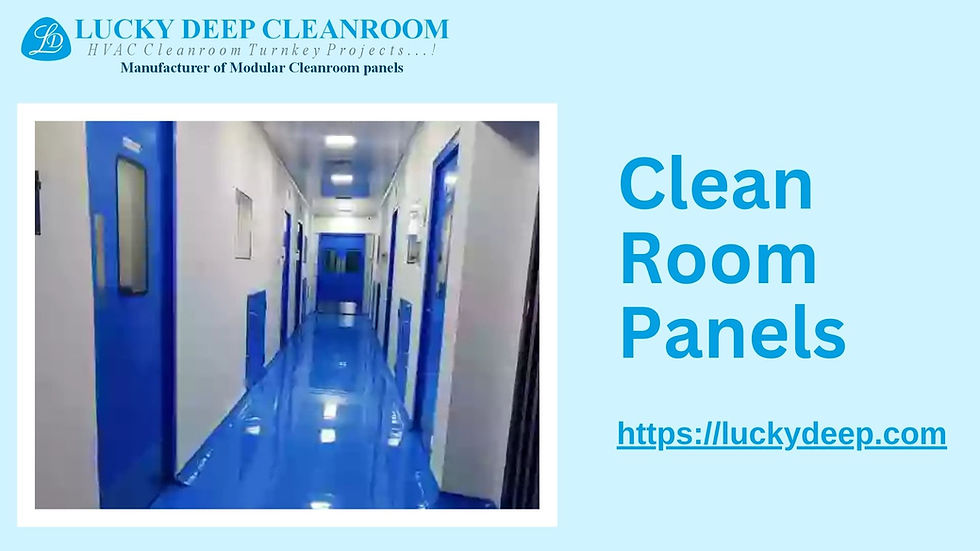How Fire-Rated Clean Room Doors Enhance Facility Safety and Compliance
- Lucky Deep
- May 14
- 2 min read

What Are Clean Room Doors?
Clean Room Doors are precision-engineered components typically used in pharmaceutical, biotechnology, electronics, and healthcare environments. They are designed to be airtight, easy to clean, and robust enough to maintain the integrity of controlled spaces. Constructed with a double skin structure, these doors can include or exclude view panels, and their design seamlessly aligns with modular cleanroom panel systems.
Fire-Rated Door Construction
The core material and structural thickness of clean room doors directly impact their performance in high-risk scenarios. For fire-rated clean room doors, the material of construction includes GPSP GI Sheets of 1.2 mm thick for the outer surface and 1.6 mm thick for the frame, ensuring higher fire resistance. The shutter thickness can range between 42 mm to 46 mm, providing the necessary mass and insulation for heat and flame containment.
Surface Finishing and Coating
These doors are typically powder-coated with a finish thickness of 60–80 microns, ensuring durability and resistance to chemical cleaning agents. Options for stainless steel finishes further enhance longevity in harsh environments.
Customizable Sizes
To meet varied industrial requirements, clean room doors are available in multiple sizes:
Frame Thicknesses: 50 mm, 80 mm, 100 mm, and 150 mm
Widths: 750 mm to 2200 mm
High-Quality Accessories for Functionality and Safety
A wide range of stainless steel accessories ensures both functionality and safety:
Hinges (3–4 per door)
‘D’ type handles (20 mm dia, 300 mm long)
Push plates (125 x 300 mm)
Kick plates (300 mm height)
Panic bars for emergency exits
Dorma TS-68 door closers
Automatic bottom seals
View panels with 6 mm safety glass
Interlocking provisions for airlock systems
Flush tower bolts for double-door configurations
These features make the doors not only secure but also convenient for everyday operational use.
Filler Materials for Enhanced Insulation
The choice of filler material inside the door contributes to both thermal insulation and fire resistance. Options include:
PUF (40±2 kg/m³)
PIR (48±2 kg/m³)
ROCKWOOL (96±2 kg/m³)
Among these, ROCKWOOL is particularly effective in fire-rated doors due to its non-combustible nature and high thermal resistance.
Why Fire-Rated Clean Room Doors Matter
In facilities that demand strict environmental control, such as pharmaceutical or biotech manufacturing plants, the risk of fire poses not only a threat to human life but also to highly sensitive production processes. Fire-rated clean room doors provide:
Compartmentalization to prevent fire spread
Time for safe evacuation
Protection for sensitive equipment and materials
Compliance with regulatory standards
Final Thoughts
Fire-rated clean room doors offer a perfect combination of hygiene, structural strength, and life safety. Investing in high-quality, compliant doors ensures that your facility is not only clean and controlled but also prepared for emergencies. Whether you're constructing a new cleanroom or upgrading an existing one, integrating fire-rated clean room doors is a critical step toward comprehensive facility safety.




コメント